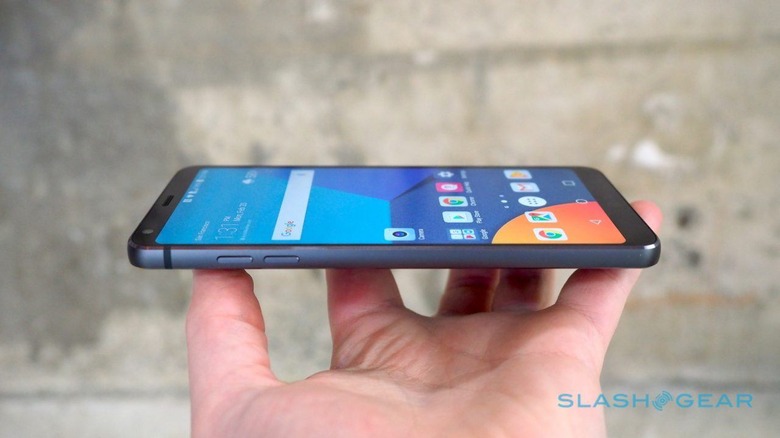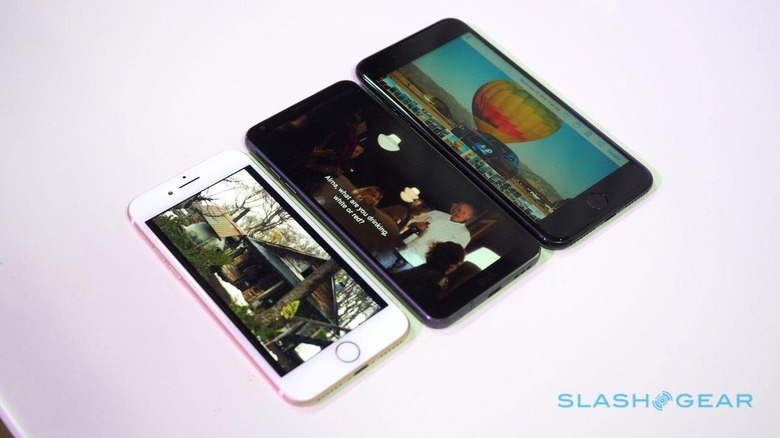Why The LG G6's Display Leads The Way In 2017
It's fair to say the LG G6 looked pretty odd in the first leaked photos. By the time the Android smartphone hit the stands at Mobile World Congress last month we were pretty much inured – both from leaks and LG's own near-constant drip-drip-drip of announcements – to its tall & skinny design. Still, when you first pick it up you notice, even if subconsciously, there's something strange going on.
That we're calling it 18:9 rather than 2:1 we can blame on marketing: 18:9 sounds "better" than 16:9, the familiar widescreen that has been the go-to aspect ratio on devices for some years now. Nonetheless, whatever the branding, the result is the same. A screen the width of which is half that of its height, and a phone with a unusually "stretched" appearance as a result.
LG isn't expecting to have the 18:9 space to itself for long, mind. The G6 may be the first phone of 2017 to use the aspect ratio, but the company tells me it expects both Samsung and Apple to follow suit before the year is out. First will come the Samsung Galaxy S8, with what's expected to be branded an "Infinity Display" that does away with the physical home button in the process.

That we'll see at the end of the month, at Samsung's March 29 event in New York City. Later in the year, meanwhile, at least one of Apple's new 2017 iPhone models is rumored to adopt the screen aspect too. The leaks can't quite decide whether all of the new "iPhone 8" will make the ratio switch, or just a so-called iPhone Anniversary Edition that will also replace the home button with a Force Touch gesture.
To that I say "bring it on" because 18:9 has some real advantages. I was a late "Plus" iPhone switcher, only tempted to move from the 4.7-inch form-factor to the bigger, 5.5-inch handset because of the dual-lens camera. Since then I've come to appreciate the larger display for how it bridges the gap between smartphone and tablet – the latter now languishing little-used on my desk – but there's no denying that the iPhone 7 Plus is a big device.
In contrast, the LG G6's skinny bezels make it a far more hand-friendly way to tote a large screen. Though it's both shorter and narrower than Apple's phablet, it's the fact that you can hold the G6 and still reach across the screen with your thumb single-handed that makes all the difference. LG hasn't had to bake in any awkward Samsung-style "mini" UIs or Apple Reachability fixes. The G6 display – and as such the G6 itself – just works.

While squeezing more usable large displays into readily handled handsets is one advantage of 18:9, I'm also mighty curious about the other extreme. Smaller, more pocketable devices with long, slender screens that nestle into the palm of the hand while still showing videos without wasteful black bars.
Any change like this needs a marketing point to hang its functionality from. LG's is predominantly the camera, with the G6 having a strange half-preview, half-camera roll interface that the company claims will make it easier to ensure you're getting the shot you want. That, and some photo and video collage tools, might appeal to amateur photographers but there's still plenty of room for pitching the breakthrough aspect ratio. I suspect competition will work in 18:9's favor, however, as rivals like Apple, Samsung, and others weigh in as to why it's the Next Big Thing.
NOW READ: LG G6 hands-on
All too often it seems like changes are made in the smartphone space simply for the sake of marketing something new. Faster chips and slight increases in camera megapixels are all well and good, but they rarely make a noticeable difference in your day to day life with a device. Consider me seriously surprised just how much of an improvement 18:9 is, both in the hand and in my pocket. Best of all, though the LG G6 may be the first to this new, friendlier form-factor, it's certainly not going to be the last.
